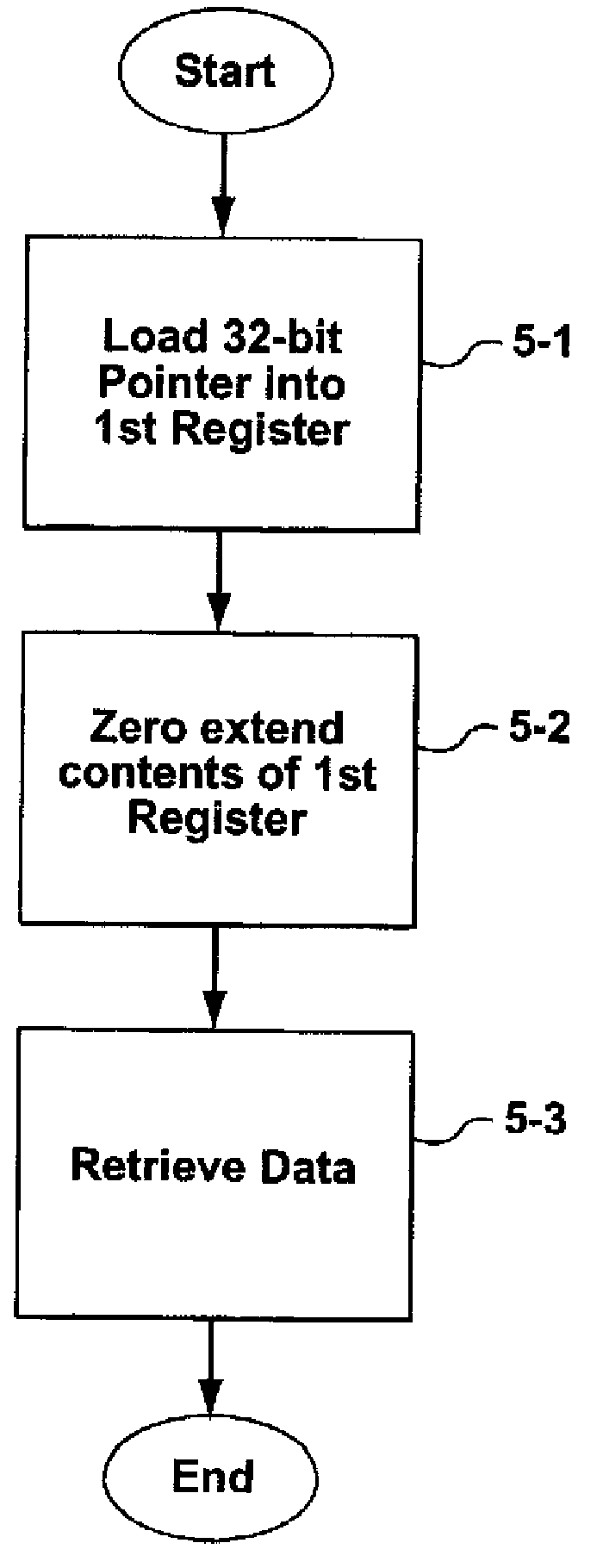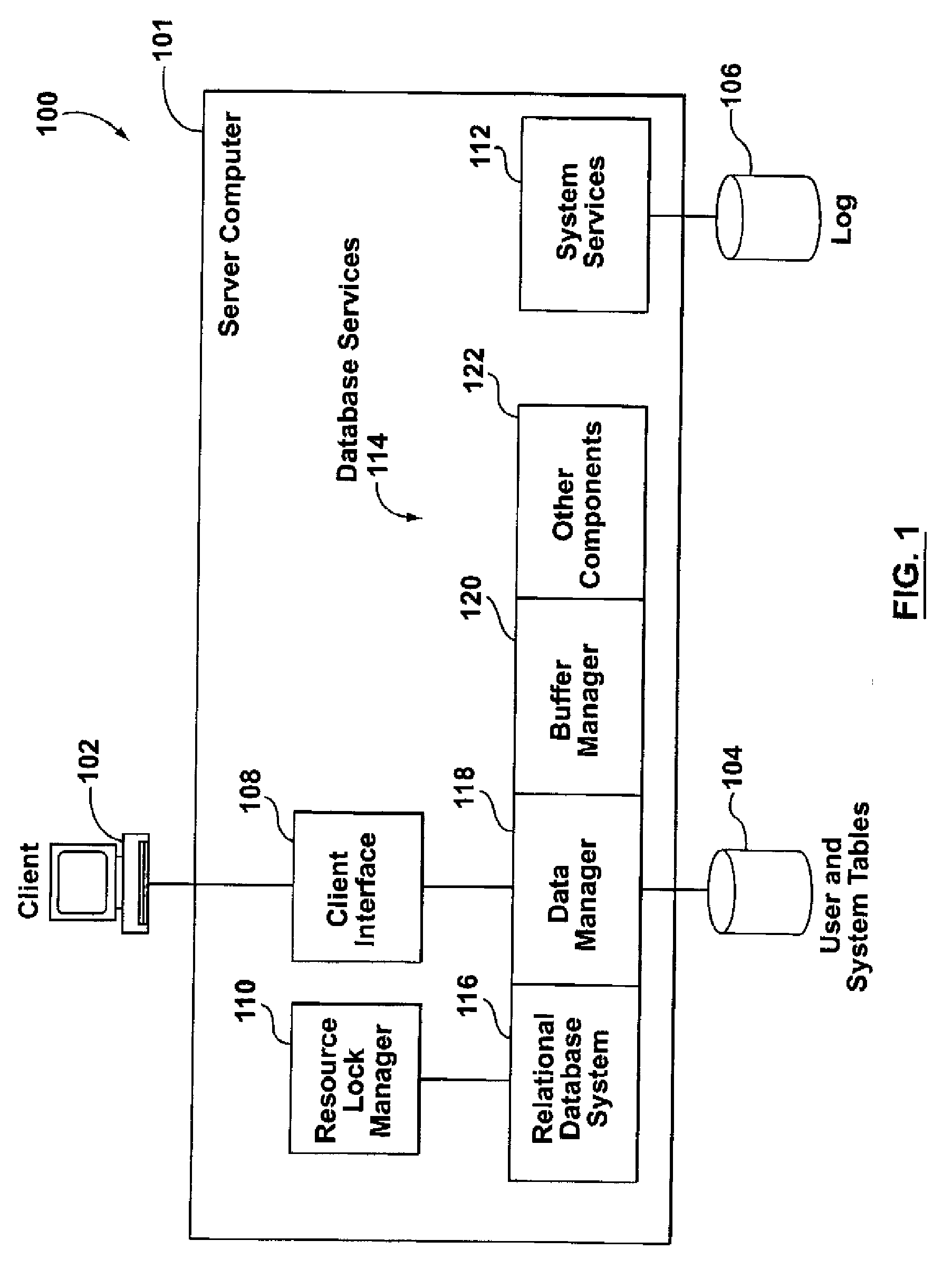Methods and computer program products for implementing low-cost pointer compression and decompression
- Summary
- Abstract
- Description
- Claims
- Application Information
AI Technical Summary
Benefits of technology
Problems solved by technology
Method used
Image
Examples
Embodiment Construction
[0020]Prior art attempts to provide 32-bit addressing within a 64-bit computing environment lead to other complications. Hardware solutions result in more complicated hardware which, in turn, increases costs and may reduce the functionality of 64-bit computing and may require significant changes to commercially available 64-bit processors. Alternatively, previous software solutions are computationally expensive. They require the maintenance of numerous heap-base values that each define a respective virtual 32-bit region within the 64-bit addressable heap. And in order to store and use the pointers to access the heap, add and subtract routines are needed to convert between 32-bit addresses (for storage) and 64-bit addresses (for use by the 64-bit processor).
[0021]By contrast, provided by aspects of the present invention there are methods and computer program products for implementing low-cost pointer compression and decompression. In accordance with more specific aspects of the inven...
PUM
 Login to View More
Login to View More Abstract
Description
Claims
Application Information
 Login to View More
Login to View More - R&D
- Intellectual Property
- Life Sciences
- Materials
- Tech Scout
- Unparalleled Data Quality
- Higher Quality Content
- 60% Fewer Hallucinations
Browse by: Latest US Patents, China's latest patents, Technical Efficacy Thesaurus, Application Domain, Technology Topic, Popular Technical Reports.
© 2025 PatSnap. All rights reserved.Legal|Privacy policy|Modern Slavery Act Transparency Statement|Sitemap|About US| Contact US: help@patsnap.com



